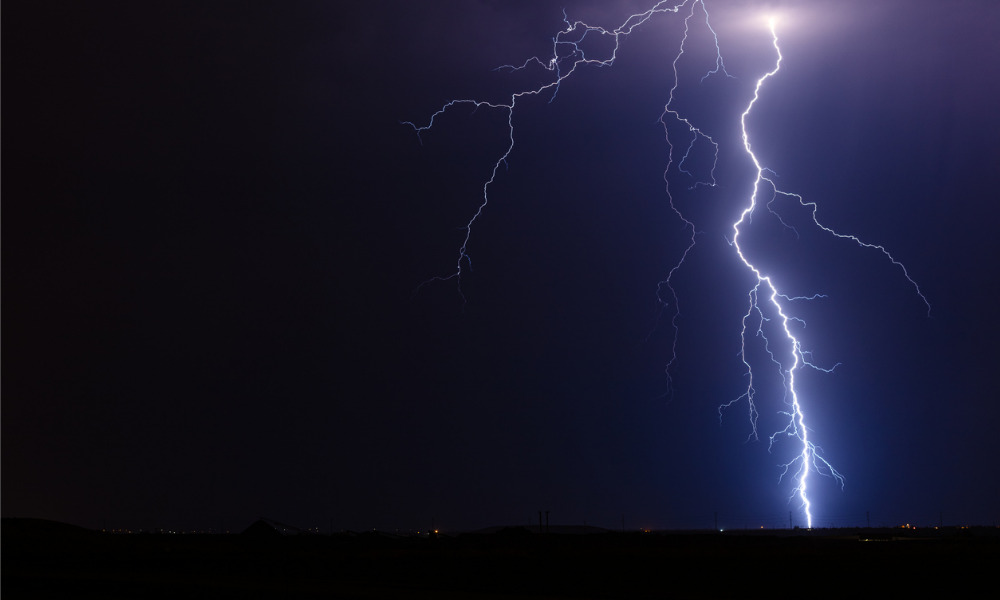Lightning bolt is a million times more powerful than household current

Employees working at height or outdoors are at the greatest risk of suffering injuries from lightning strikes, according to the Centers for Diseases Control and Prevention (CDC).
And workers in construction, farming, field labor, heavy equipment operation, logging, pipefitting, telecommunications and power pole work are especially at risk.
A lightning bolt is a million times more powerful than household current, carrying up to 100 million volts of electricity, according to the Canadian Centre for Occupational Health and Safety (CCOHS). When someone is struck by lightning, an electrical shock occurs that can cause burns and even stop the person's breathing.
And while the odds of getting struck by lightning are less than one in a million, lightning kills two to three people every year in Canada, and injures another 80 people, according to Environment Canada (2021). Most of these injuries and fatalities occur between June and August. Most fatalities were people in open areas or taking shelter under a tree.
In February, the Commission des normes, de l'équité, de la santé et de la sécurité du travail (CNESST), Quebec’s health and safety regulatory board, revealed the conclusions of its investigation into the death of farm worker Oscar Antonio Vicente-Torres. Vicente-Torres was working for farm N. et L. St-Denis S.E.N.C., on 10 August 2021 in Oka, QC, when he was struck by lightning.
Knowing what to do when lightning is close is especially important for people who work outdoors, said CCOHS.
“Employers need to recognize the hazards associated with electrical storms and, where appropriate, have safe procedures and work systems in place, to minimize the risk of injury or harm to employees, and should review these policies seasonally,” said CCOHS.
“Having a preparedness plan and taking safety measures can prevent many lightning deaths and injuries.”
Lightning safety procedures may include:
- outlining what actions workers must take when hearing thunder, or seeing lightning or warning signs of an approaching storm
- having a procedure to notify workers about lightning safety warnings
- identifying safe locations and shelters
- requiring workers to reach a safe location within a specified time period
- establishing criteria for stopping and restarting outdoor work activities
- making sure the public are evacuated, for example at a golf course, public beach, or swimming pool
- checking in with all workers after a thunderstorm has passed
- training workers on the lightning preparedness plan
COS also previously shared 10 effective safety tips that employers, workers and safety professionals need to be aware of on construction sites.





